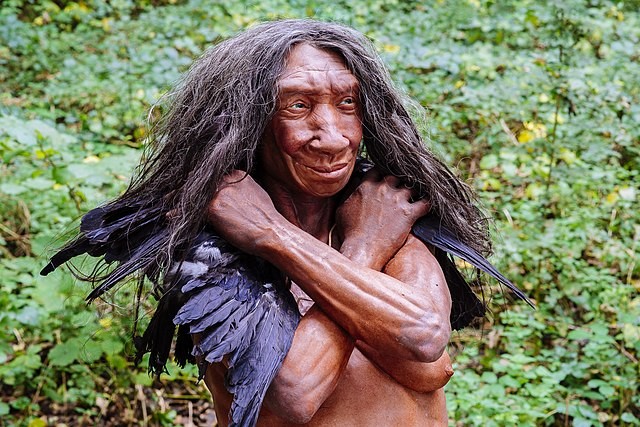
(Photo: Wikimedia Commons/Neanderthal-Museum, Mettmann)
Neanderthals and modern humans had several encounters in the past. There are even reports that Homo sapiens and Neanderthals had children together, but the latter would always disappear while the modern humans remain.
What's the Modern Humans' Advantage Over the Neanderthals?
Nicholas R. Longrich, a Senior Lecturer in Paleontology and Evolutionary Biology, Life Sciences at the University of Bath, compared modern humans and Neanderthals. He pointed out one key difference between the two -- the size of their tribes.
People like the Hadzabe of Tanzania and the Khoisan of Namibia form roving bands of 10 to 60 people. The bands unite to form a loosely structured tribe with at least a thousand individuals.
Although there are no formal hierarchies among these tribes, they are united by marriages, kinships, friendships, and a common language and religion.
Neanderthal cultures were comparable, but there was one significant difference—- they had smaller social groups, which is evident in their low genetic diversity.
Genes are easily lost in small populations. If one in 10 people carries the gene for curly hair, one death might eliminate it. Five persons in a band of 50 would have several backup copies of the gene. Thus, tiny populations eventually lose genetic diversity and accumulate fewer genes.
Eleven Neanderthals' bones and teeth were discovered in a cave in the Siberian Altai Mountains in 2022. DNA from these remains was retrieved. A father and a daughter were among the several relatives; they were members of the same band. Additionally, their genetic diversity was minimal. Modern humans have two copies of every gene as we inherit two sets of chromosomes—- one from our father and one from our mother. We frequently have two distinct gene variants. It's possible that your father gave you the gene for brown eyes and your mother the gene for blue eyes.
However, the Altai Neanderthals typically carried a single copy of each gene. According to the study, this limited variety indicates that they most likely lived in small bands, with an average of only 20 individuals.
Neanderthal anatomy might have favored small groups. Neanderthals were heavier than us because they were solid and robust. Because each Neanderthal required more food than Homo sapiens, fewer Neanderthals could be supported on the land.
Neanderthals might have mostly consumed meat as well. Again, smaller numbers would result from meat-eaters receiving fewer calories from the land than individuals who ate both meat and plants.
ALSO READ: 56,000-Year-Old Neanderthal Looks Like Modern Human in Expert's Digital Facial Reconstruction
Are Modern Humans Like Neanderthals?
Ludovic Slimak, a paleoanthropologist at the University of Toulouse in France and director of the Grotte Mandrin says modern humans are not the same as Neanderthals. Despite reports claiming the latter were our cousins or brothers, Slimak says that was reportedly not the case.
Previous reports claimed that Neanderthals were not as intelligent as modern humans. Some claimed the extinct species were related to use. Newer reports argued that they were not as smart as modern humans, noting that they mastered fire before our ancestors and were skilled hunters. They could take down big beasts like mammoths and woolly rhinos and small animals like rabbits and birds. Additionally, they had a sense of beauty and were into making beads and paintings. They also buried their dead with flowers.
But per Slimak, modern humans and Neanderthals were different. Their physical characteristics are among the most evident distinctions between them. The former has a small pelvis and a high, rounded, or globular braincase. In contrast, the latter, according to their fossils, have a wider pelvis and a longer, lower cranium.
We can distinguish between the three tiny bones in our middle ear, critical for hearing, and those of Neanderthals by taking exact measurements. Generally speaking, the differences in ear bone structure are more noticeable than the differences between our nearest living relatives, gorillas, and chimpanzees.
RELATED ARTICLE: First Neanderthal Family: Largest Genetic Research in Ancient Humans Offers a Glimpse of Real-Life Flintstones
Check out more news and information on Neanderthals in Science Times.














